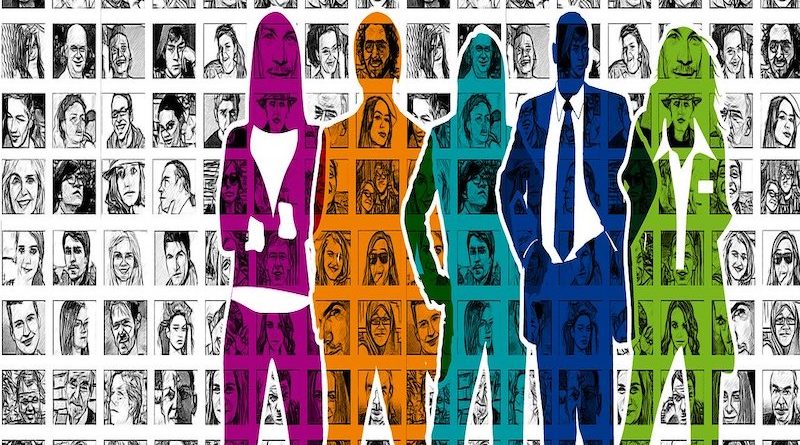The year 2020 is the dawn of a new decade, bringing in new challenges, solutions, problems, innovations, ideas, and growth. We are at the height of digital transformation and innovation. Technological advancements are on the rise and dominating each and every field. And as a consequence, we are experiencing a drastic change in the way we live our lives. In these transformational times, it becomes all the more important to change our mindset and the way we think. This is a necessity for progress in this rapidly evolving era. It is critical in this day and age that we talk about inclusion. Promoting diversity in all aspects will be our turning point. Our ‘make our break’ relies on us inducting the diverse, the different, and the new. Therefore, we must enthusiastically embrace this in order to succeed.
These days, leading organizations and businesses are grappling with how to accomplish two business imperatives that will shape up the future: One is how to stay ahead in this digitally transforming era, and two, how to be more inclusive and promote diversity.
“Diversity and inclusion are always something industries should strive for.” Halima Aden, American Fashion Model.
The Fight for Inclusivity
It is well known that Silicon Valley is dominated by the stereotypical white male with a few Asians in the mix. It is notoriously bad at embracing diversity and inclusivity. However, things are on the road to betterment. The current ongoing diversity movement started around 10 years ago. And since then, we have come a long way. That said, there is still a whole lot more area to cover.
Apart from the unwelcoming environment, the other contributor to the lack of diversity in funding. There is a huge lack of investment and funding given to underrepresented and diverse founders and startups. In 2018, female founders got a hold of only a minimal 2.2% of U.S. venture capital dollars. Furthermore, there are currently less than 10% of women decision-makers at VC firms in the United States. And since the U.S. is one of the countries leading the fight for inclusivity it is apparent that we are way behind.
Identifying & Fighting Bias
In most cases bias is inadvertent, it can be conscious and unconscious, and well-meaning individuals can also be prone to bias. It is an adverse side effect of diversity that is unavoidable. It can be controlled, trained to reduce, and addressed through awareness but it is something that will persist even in the most inclusive of organizations.
The goal is to make sure that organizations and leaders are making a conscious effort to counter it. This is doable, one of the best examples is in the tech industry. A majorly male-dominated field with extreme bias towards both women and racial minorities. In 2017, Vodafone reportedly rephrased there job advertisements to attract women candidates. In the leading three month trial, the company saw a 7% increase in female hires. The advert that was originally written to seek “outstanding individuals” and “help on our aggressive journey” – was modified to more gender-neutral language and a search for “extraordinary individuals”, and “help on our bold journey”.
Being aware of this apparent bias and blind spots allowed advertisers and HR professionals to formulate necessary strategies to create a more inclusive and welcoming environment for candidates and diverse groups. Working towards fighting such hidden imbalances can have far-reaching and advantageous effects.
Expansions of Horizons & Talent
The more diverse a team of individuals is the more diverse ideas, solutions, and innovations you will get. Uniform and similar teams have advantages in collaboration and communication but difficult problems are often solved by a unique team of individuals. You are not going to come up with unique ideas if you create a team of five white, 30ish something, males all of the same field. You need to look for diverse individuals who have lived different lives, and have unique ways of going about solving a problem.
In order to embrace change and welcome inclusivity, we need to break through the stereotypes. The person who sees the opportunity and possibilities of diverse groups and the talent they have hidden in them will be the first to climb the digital ladder. Creating a diverse and inclusive workspace is crucial to attracting talented employees that will boost your company’s success.
Embracing inclusion and diversity can be challenging, but the benefits are endless. By doing so you can nurture new talent, level the playing fields, come up with new ideas and solutions, and bring forth a new era. Organizations need to realize that this can be an empowering change and learn to embrace and welcome it. It is important to keep up with this changing era, it is yet to be seen whether it will change for the better or worse. But, we can make a conscious effort to work toward improvement, inclusivity, and diversity instead of staying trapped in the pass of working backward.
Exclusion is always dangerous. Inclusion is the only safety if we are to have a peaceful world. – Pearl S. Buck, American Writer, Columnist.
Rimsha Salam is a tech-enthusiast, writer, blogger, ex-quality assurance engineer, and freelancer. She writes on the latest tech trends, gadgets, Information technology, and more. Always eager to learn and ready for new experiences, she is a self-proclaimed tech geek, bookaholic, introvert, and gamer.











